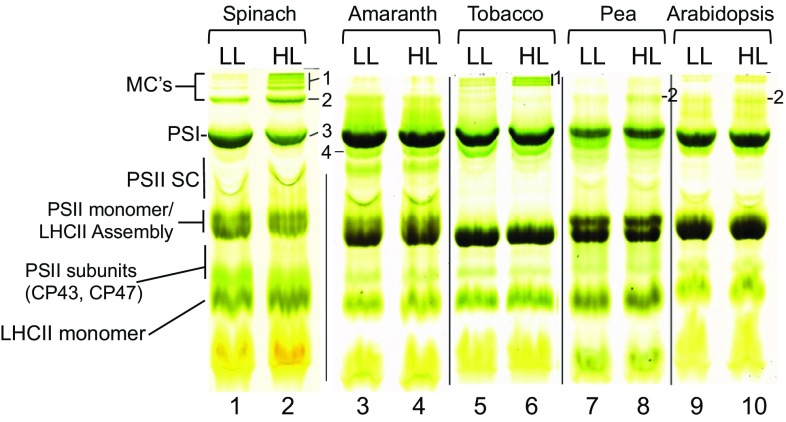Fig. 1.
High light-inducible megacomplexes are differentially present in various common model plant species as resolved by native green gel electrophoresis. Species varieties are as follows: Spinacia oleracea; Amaranthus ‘opopeo,’ Nicotiana tabacum ‘Petit Havana,’ Pisum sativum ‘Little Marvel,’ Arabidopsis thaliana ‘Columbia.’ Each species was grown under 150 µE/m2/s (low light, LL) of illumination and subjected to 600 µE/m2/s of white light illumination for 30 min as a high light (HL) treatment. Thylakoids were isolated and solubilized in 1% β-decyl maltoside/1% n-octyl glucoside buffer to a final chlorophyll concentration of 1 mg/mL, as described in Materials and Methods, and 20 mg chlorophyll was loaded per lane and analyzed by green gel electrophoresis. Resolved thylakoid complexes designated as megacomplex (MC) bands 1 and 2; Photosystem I (PSI) band 3; PSII dimer band 4 ; Photosystem II Supercomplex (PSII SC); PSII monomer/Light-Harvesting (LHCII) Assembly; PSII Subunits (CP43,CP47); LHCII monomer were labeled according to Allen and Staehlein (1991) and in agreement with our own data from Western blotting

